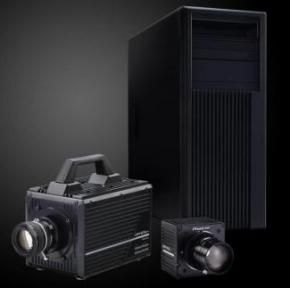Polarization – A New Angle on High-Speed Imaging
High-speed imaging cameras have existed for more than a century-and-a-half. While early examples of the technology were rudimentary, drastic strides forward have been made since the 1950s. However, there is still room for growth in the quality and type of high-speed imaging available today, as well as a growing number of target applications that can benefit from newer technologies.
Polarization high-speed imaging cameras can now offer frame rates of more than one million frames per second and capture light in different ways to provide a deeper analysis of stress distribution, stress propagation around impact points, and even visualizations of fluid stress distribution.
How Polarization High-Speed Imaging Works
Polarization imaging cameras have the capacity to capture the interaction between light's electric field and various different materials. Light is an electromagnetic wave that consists of two major components: an electric field and a perpendicular magnetic field.
Polarization high-speed imaging focuses on the direction of the electric field to define the polarization direction of light. The light sources you encounter on a daily basis are not polarized, such as light from the sun or from an incandescent light bulb. The light from these sources moves in random directions.
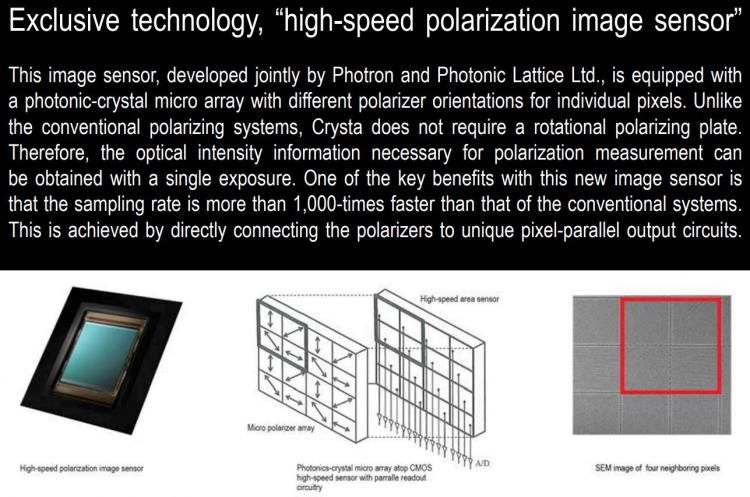
A polarization high-speed camera is capable of capturing images of multiple polarization states to detect geometry, surface, and the physical properties are target images in a manner that conventional high-speed imaging cannot.
As a result, there are a number of different polarization imaging applications that can benefit from this type of high-speed imaging technology.
Dynamic Stress Imaging
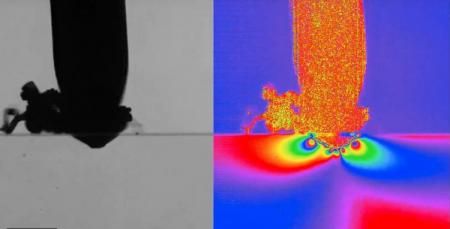 Both military and aerospace applications can benefit from polarization imaging cameras by gaining a clearer picture of dynamic stress. There are multiple areas within these industries that would benefit from high-speed polarization imaging.
Both military and aerospace applications can benefit from polarization imaging cameras by gaining a clearer picture of dynamic stress. There are multiple areas within these industries that would benefit from high-speed polarization imaging.
For example, such cameras can be used to test the impact of a bullet to show the distribution of internal stress. This applies to both bullets and larger rounds and can be used to study how those rounds impact personal body armor worn by soldiers and the siding on armored vehicles or tanks. By analyzing how these systems handle the impact of explosive rounds and distribute stress, polarization imaging can help defense contractors build better armor to keep troops safer on the field of battle.
In a similar manner, the aerospace industry can use polarization imaging to improve flight safety in the construction of new commercial airliners and military jets alike. Dynamic stress imaging can also be used to identify potential weak points in the design of an airframe and analyze how the airframe holds up against the pressures of flight, whether it is standard commercial aviation or the intense movement of military jets in a dogfight.
Enhancing Contrast and Reducing Reflection
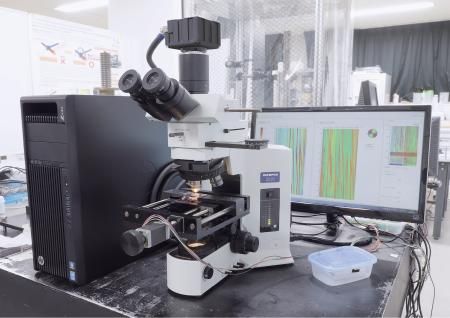 Polarization imaging can help enhance the contrast of images to provide a clearer picture of the target, and also improve the identification of unwanted deficiencies. This type of high-speed imaging can highlight abnormalities like surface damage and the presence of foreign objects.
Polarization imaging can help enhance the contrast of images to provide a clearer picture of the target, and also improve the identification of unwanted deficiencies. This type of high-speed imaging can highlight abnormalities like surface damage and the presence of foreign objects.
As a simple example, polarization camera imaging can analyze the reflected light from products wrapped in plastic shrink wrap to detect any changes in the angle of the surface of the object or changes in the texture of the surface, thus highlighting scratches, dents, or foreign objects in the product that impact quality.
For more complex example, polarization imaging can be used in low-light environments to provide a clearer picture. Polarization cameras offer a clearer picture in these environments by detecting the angle of polarization off the object and improve visualization compared to other types of low-light cameras.
Similarly, polarization cameras can be deployed in food inspection to improve quality checks by reducing glare and reflection. Objects may reflect light in a manner that makes robust inspection difficult, but polarization removes the obstacles for a clearer picture.
Inspecting Transparent Materials or Solutions
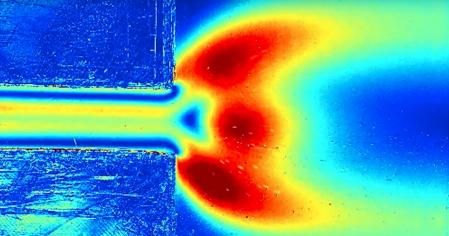 All polarization cameras are capable of capturing images that the naked eye cannot visualize. This includes visualizing molecular materials within a transparent material or solution.
All polarization cameras are capable of capturing images that the naked eye cannot visualize. This includes visualizing molecular materials within a transparent material or solution.
By deploying a polarized light source on one side of a transparent material or solution and a polarization image on the other side, the camera is able to detect the changes in the direction of the polarized light as it moves through an object. In so doing, the manner in which the light is altered as it passes through a transparent material highlights internal stressors, internal debris, and surface scratches.
As another simple example of this application in use, consider glasses of water with different concentrations of salt.
To the naked eye, each glass is going to look the same. The average high-speed imaging camera isn't going to help identify the different salt concentration levels in these glasses either.
However, polarization cameras will capture how the light is altered as it passes through each glass to identify the varying concentrations in each one. This can be applied to a wide variety of industries to test the purity and quality of water sources for more serious threats than salt, such as poisonous chemicals.
Evaluating Crack Propagation in Glass
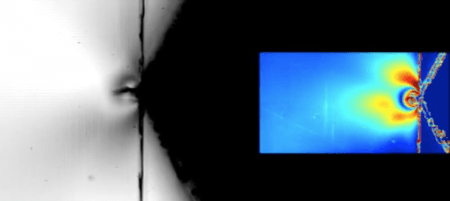 The field of mobile technology can also benefit from polarization camera imaging to test and evaluate the strength of glass on smartphones and tablets, determine how that glass stands up to wear and tear, and even discover deficiencies in the production of protective cases typically applied to these items.
The field of mobile technology can also benefit from polarization camera imaging to test and evaluate the strength of glass on smartphones and tablets, determine how that glass stands up to wear and tear, and even discover deficiencies in the production of protective cases typically applied to these items.
The most common source of damage to smartphone screens is foreign objects. Whether the phone is dropped or a foreign object is dropped on it, the strength of the glass and its ability to withstand stress determines how much pressure has to be applied before the glass breaks.
Polarization imaging allows manufacturers to test the strength of the glass as a whole, but also identify how cracks propagate and how stress is distributed across the surface to try and avoid cracking or breaking. Polarization cameras can also detect surface scratches and other minor damage that is not always visible to the human eye.
In this particular realm, polarization cameras can also benefit manufacturing sectors by visualizing stress distribution. Rather than relying on trial-and-error processes during high-speed machining, advanced manufacturing companies can gather real-time information with polarization imaging. There is not only the drill bit to take into consideration, but also the grains around the cutting edges.
These grains can act as various additional cutting edges that can create additional stress during grinding. With this type of high-speed imaging, manufacturing companies can better determine the conditions that suit materials such as glass and ceramics with a lower degree of error.
Analyze Biological Samples
Polarization cameras can also be deployed in the medical field to analyze biological samples. One such example of its use in this realm includes using gelatin models to simulate the response to force.
Typical high-speed imaging cannot capture how force impacts gelatin models representing human tissues. However, polarization imaging can determine how the brain might respond to force.
In the treatment of military veterans, this could result in the production of personal gear that better protects troops in the field against blunt force. It can also be used to simulate the impact of shaken baby syndrome to determine the life-long impact on a young brain from such force.
Object Detection in Natural Environments
The ability of polarization camera imaging to distinguish objects from their environment has broad applications in various fields, including law enforcement, military, and civil industries.
The naked eye and certain other types of imaging technology are not always capable of distinguishing items from their environment. Military applications include allowing forces in the field to detect enemy vehicles in wooded or otherwise visually-impaired locations by picking up on the unique polarized angle of light reflected off of the object.
Researchers and scientists could potentially use polarization cameras to identify structures that have otherwise gone undetected for centuries in dense forests or jungles. As the surrounding environment grew over these ancient structures, polarization camera imaging can better distinguish anomalies in the area that don't match the signature of the forest or jungle as a whole.

